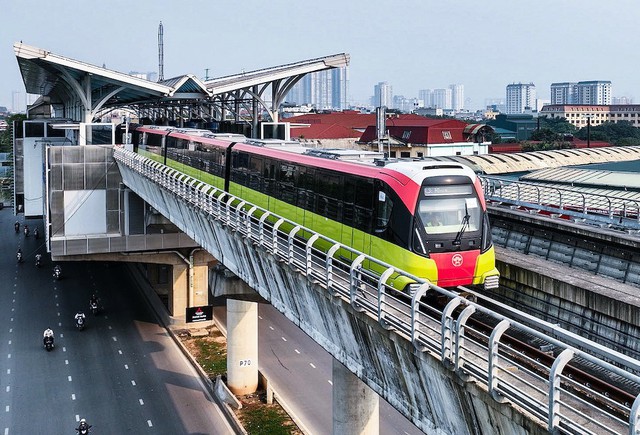Ha Noi doubles effort to finalize metro network
VGP - Ha Noi is committed to accelerating the development of the urban railway network by expediting site clearance, removing bottlenecks, and providing advantageous conditions for contractors, according to Duong Duc Tuan, Vice Chairman of the Ha Noi People's Committee.

"In the long term, Ha Noi will closely coordinate with the Ministry of Transport to complete the overall project of the capital's urban rail network, submit a resolution to the National Assembly to approve the overall investment policy, promulgate specific mechanisms and policies, and shorten the procedures and time for investment preparation," Tuan said.
Specifically, the city will complete regulations on the management and operation of urban railways and the implementation of transit-oriented development (TOD); procedures for the collection of fees in TOD areas; standards and norms for the City's urban railways by the Capital Law.
From now until 2035, Ha Noi needs to build at least 200 kilometers of urban railways. This is a challenge that requires great determination to overcome. In particular, it requires the development of supporting industries and technologies for the operation of urban railways.
Ha Noi aims to have 10 metro lines by 2035, covering about 410 kilometers, with a total investment of about US$37.2 billion. The target is part of the capital's transportation plan approved by the Prime Minister on March 31, 2016.
The adjusted overall plan for the capital from 2036 to 2045 includes the construction of an additional 200 kilometers of urban rail, at an estimated cost of US$18.2 billion. This would bring the total number of light rail lines to 14, extending about 616 kilometers by 2045.
Ha Noi's goal is to develop a modern, synchronized urban rail network to meet growing commuter demand. The city aims for public transport to account for 50-55 percent of passenger traffic by 2035, rising to 65-70 percent thereafter. "To achieve these goals, the city has drawn up a comprehensive plan for the development of the urban rail network.
To attract private investors, the city will continue to refine policies, including infrastructure investment budgets, compensation for land clearance, and resettlement support. "This will include competitive bidding for private investors to procure locomotives, rolling stock, control systems, information technology, signaling systems, and electromechanical equipment as part of a comprehensive package."
In addition, measures will be taken to ensure consistency throughout the implementation of the urban railway project, allowing investors to obtain rights to use parts of the infrastructure and participate in the development of projects within the planned TOD areas.
Ha Noi will focus resources on completing the seven ring road projects, radial and regional roads. In addition, the city aims to shift to green and clean transportation methods and increase the share of public passenger transport to about 30 percent of Ha Noi's total traffic by 2025-2026.
The city will replace the existing Kim Ma - Yen Nghia Bus Rapid Transit (BRT) line with a metro railway.
"The bus rapid transit line has turned into a regular, slow bus line. With adjustments to the general transportation plan, the city will replace the Kim Ma - Yen Nghia BRT line with urban railway line 11," Ha Noi set an ambitious goal of building more than 410 kilometers of urban railway by 2035, with a total network of 15 lines running more than 616 kilometers by 2065.
This initiative aims to transform the city's public transport system into a modern, efficient one capable of supporting growing traffic, marking a significant step in the modernization of the city's mass transit system.
So far, 21.5 km of this network is operational, including the Cat Linh - Ha Dong metro line (13 km) and the 8.5 km elevated section of the Nhon - Cau Giay metro line. This is only 4 percent of the planned total./.

